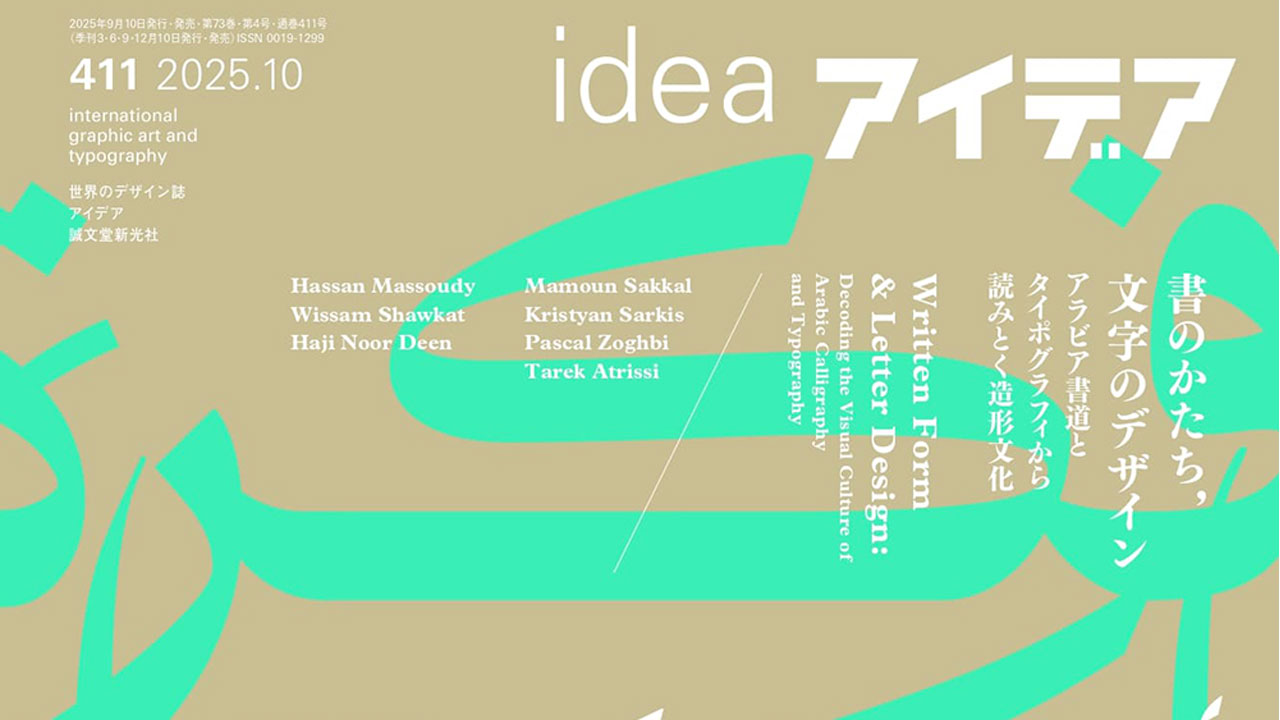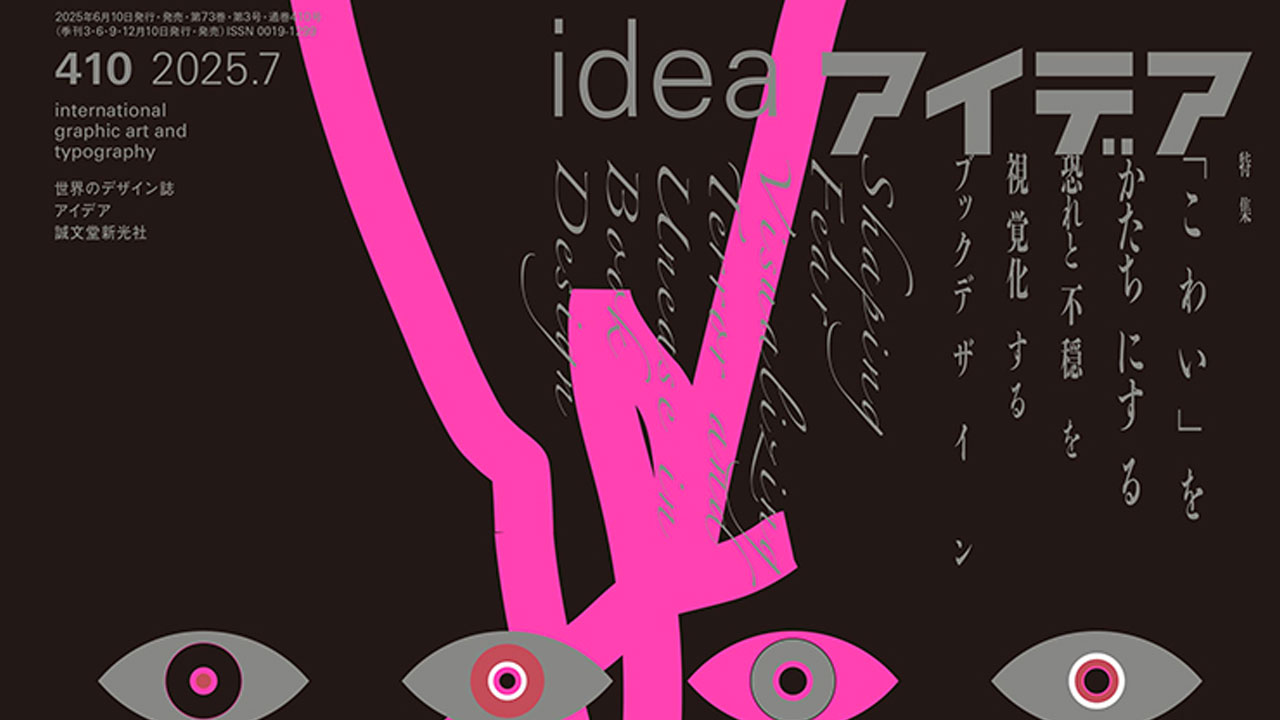- Price:
- USD $50.00 postpaid (international air mail included)
- Designers:
- Laboratories
- Publisher:
- Seibundo Shinkosha
- Categories:
- Idea + Publications
Written Form & Letter Design:
Decoding the Visual Culture of Arabic Calligraphy and Typography
For approximately 1,400 years the intertwined form of spirituality and artistic beauty that is Arabic script has sustained both the culture and faith of the Islamic world. Arabic calligraphy flourished with the first writings of the Holy Quran (which had been bequeathed verbally before then) and has since become an appropriate visual expression befitting the Quran’s sublime ideals. Use of images is restricted in the Islamic context; this lends to the positioning of Arabic script as a respected means of visual expression for meaning and beauty to coexist. In particular, this can be seen in religious architecture, such as mosques and madrasas schools, where writings adorn walls and domes alongside geometric and organic motifs, bestowing upon viewers both spiritual profundity and symbolism.

Due to the nature of the unbroken lines of Arabic script and its complex modularity in letterform, the Arabic writing system has been difficult to adapt into the world of printing, and hence Arabic forms of letterpress printing have lagged behind their counterpart European languages. More orthodox forms of Muslim letterpress printing began in the 18th century, and initially faced a major challenge of retaining the beauty in calligraphy while allowing for the mechanical reproduction required.

Today we are witnessing the emergence of diverse attempts to surpass these limitations and bridge tradition and innovation. While some calligraphers reinterpret classical traditions by incorporating modern sensibilities, some designers explore typeface design and layout in the digital world, and pioneer new forms of typographical expression. They all work to preserve the inherent beauty in Arabic calligraphy—the fluidity and rhythm of its lines and compositions of letter spacing and negative spaces̶and bequeath its legacy through contemporary visual culture such as posters, logotypes, book design, and other forms of media.

This issue’s feature is divided into two parts: chapter 1, Calligraphy, which traces the origin and aesthetics of Arabic calligraphy, and chapter 2, Typography, which explores its more modern developments and printing methods. Read together they reveal the genealogy of the visual culture that Arabic script has established. We hope this feature article assists in reexamining both the form and meaning inherent in Arabic script, and helps us contemplate how this calligraphy culture, with its bedrock in religion, still continues to thrive throughout the ages and accompanying technological changes.

Chapter 01 Calligraphy: Tradition and Spirit with Written Words
Arabic Script and Calligraphy
Text by Hatsuki Aishima
A Guide to Arabic Script: Form and Sound
Supervised by Norihito Hayashi
Arabic Scripts in Books, Decorative Arts and Architecture
Text by Norihito Hayashi
Manuscripts
Decorative Arts
Architecture


Arabic Calligraphy Today
Hassan Massoudy

Wissam Shawkat

Haji Noor Deen

Chapter 02 Typography: Modern Expression of Written Form
Arabic Typography
Text by Toshi Omagari

The Practice of Type Designers
Mamoun Sakkal

Kristyan Sarkis

Pascal Zoghbi

Typographic Design: The Work of Tarek Atrissi

[Essay]
Script and Ornamentation in Islamic Spaces
Text by Naoko Fukami

Between East and West: Islamic Art and the Arabic Script
Text by Kazue Kobayashi

The Silent Script: Arab Graphic Design and the Politics of Visibility
Text by Haytham Nawar

[Book Showcase]
A Guide to Arabic Script: Related Books
Text by Toshi Omagari

[Series]
Design Eccentric From the World Collectors’ Room
Vol. 11: The Design Reviewed Archive, part 3
East meets West & West meets East:
Captivated by the Beauty of Wahon (Traditional Japanese Books)
Text by Yuko Nakajima
Design by Kazuhiro Yamada + Akiko Takeo (nipponia)
Translation by Fraze Craze Inc.
[Review]
Art Book Osaka
Text and Design by Duncan Brotherton

The Joy of Inheriting
Gaby Bazin – Design Studio and Letterpress Printing, Le Typographe
Text and Design by Toshinobu Nagata
Cooperation and Photo: Ichigaya Letterpress Factory

Ann Sangseu Solo Exhibition, Hollyeora (Be Spellbound)
Text by Madoka Nishi
Design by Shoko Nakayama
Nationalmuseum Sweden – Drawings Collection Exhibition:
From the Renaissance to the Baroque
Text by Idea
Design by Shoko Nakayama
The 27th Yusaku Kamekura Design Award, JAGDA New Designer Award 2025, and JAGDA Awards 2025 Announced







